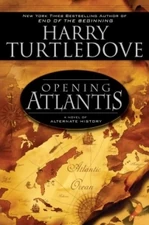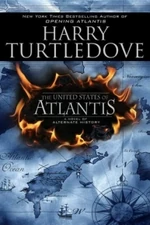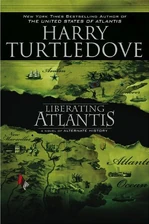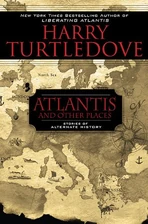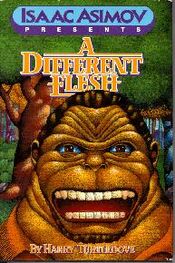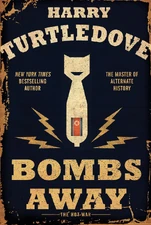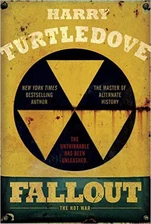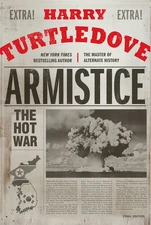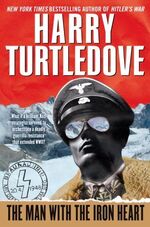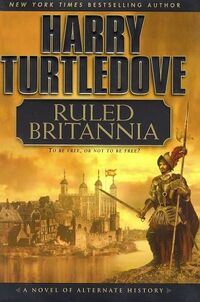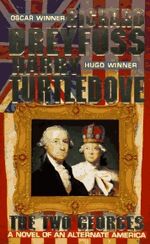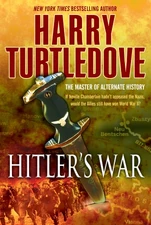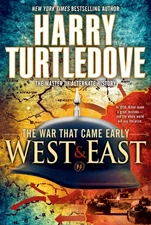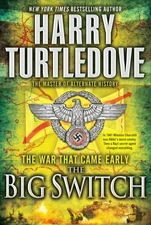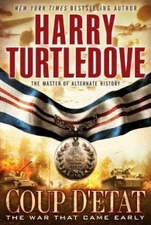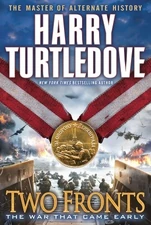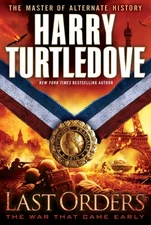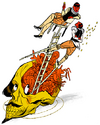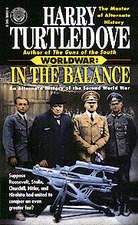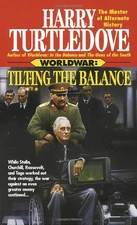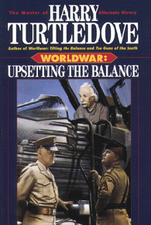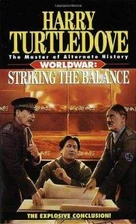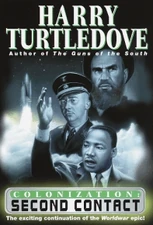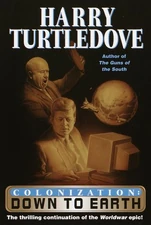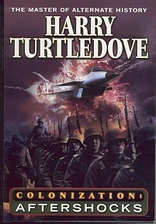For the Canadian city, see London, Ontario.

London is the capital and largest city of England and the United Kingdom. London has been a major settlement for two millennia and the history of London goes back to its founding within the Roman Empire, when it was named Londinium. London is one of the planet's most populous cities, a major financial center, and a major cultural crossroads.
London in Atlantis
During his visit to Hanover, Atlantis, Doctor James Walton instinctively compared various aspects of the city to his hometown of London. Most of the comparisons he observed were not favorable.
London in "Coming Across"
Lingol visited London on his travels through Europe in the 13th century.[1] This was his last trip to Earth until 1979, when he came to San Francisco. The humans in both times and places spoke the English language, but their dialects were very different.[2]
London in "A Different Flesh"
By the 1660s it had become a trend for rich people in London to buy sims to help run their household. One such example was the Pepys home. It was Samuel Pepys' observation of his sims Tom and Peg that inspired him to come up with the transformational theory of life. After discussing it with the Rota Club at the Turk's Head, Pepys first went to propose the theory at Gresham College and then formally presented it at the Royal Society in May 1661.
London in "Gentlemen of the Shade"
London was secretly the home of a group of vampires called the Sanguine Club. In 1888, a rogue vampire called Jack began a series of murders in Whitechapel, a district in London's East End. Terrified that Jack's actions would reveal them to the world, the Sanguine Club finally captured him and sealed him the foundation of the Tower Bridge.
London in The Hot War
Unlike other European capitals, London came through World War III without once being hit by atomic bombs.
London in In the Presence of Mine Enemies
London was occupied by German forces following Britain's defeat in World War II. Led by Prime Minister Winston Churchill, Britain put up stiff resistance to the German invasion, sacrificing the city and reducing it to rubble, all in vain. Many of the city's landmarks were destroyed, such as Big Ben, the Houses of Parliament and St. Paul's Cathedral.
By 2010, London was the center of the pro-Nazi government ruled by the British Union of Fascists, which was founded by Oswald Mosley in the 1930s. The harsh reparations imposed by the Germans, and partisan uprisings which were finally crushed by 1970, left substantial parts of the city in perpetual ruin. Although the city had a more modern look than Berlin, it was still in a state of rebuilding a half-century after the war ended. German urban planners often visited London to see how their British counterparts were doing, as a city so greatly destroyed offered many chances of "starting from zero".
The 2010 annual meeting place of the BUF saw initial rumblings against the German Reich, as Charlie Lynton became party leader by quorum rather than by appointment, and began calling for a similar selection process for the German Führer.
More mundanely, London was also the site of the annual meeting of the Medieval English Association, attended by scholars from all over the Reich, including Susanna Weiss.
London in "The Last Article"
Following the United Kingdom's defeat in 1941, London was occupied by Nazi Germany. While in India in 1947, Field Marshal Walther Model noted that roast beef and Yorkshire pudding was better than the food which was available in London by that time.
London in The Man With the Iron Heart
London had been on the receiving end of destructive German bombing raids throughout World War II. Even in December 1946, much of the city was still in rubble. One night, a pair of German Freedom Front agents used truck bombs to destroy Westminster Abbey and St. Paul's Cathedral. This was months after another GFF agent had detonated a bomb at the base of the Eiffel Tower in Paris. Although the British government had stationed guards around several monuments in the immediate aftermath of the Paris attack, the guards had been withdrawn when no attack came.
Constable Cedric Mitchell was a witness to the Westminster Abbey attack.
London in "A Massachusetts Yankee in King Arthur's Court"
President John F. Kennedy was visiting London for a summit with Prime Minister Harold Macmillan in 1963 when he was transported back through time to the historical Cam'lod'n.
London in "News From the Front"
London's battering by German bombers during World War II turned the citizens against the Churchill Government for not accepting German peace terms. In April 1942, protestors in the city called for British withdrawal from Malta, North Africa, and other foolish ventures.[3]
London in Ruled Britannia
London was occupied by Spanish forces supporting Queen Isabella and King Albert from 1588 to 1598. It was in London that Sir William Cecil's plot to overthrow the Hapsburg monarchs and restore Queen Elizabeth was hatched.
Notable sights include the Tower of London, The Theatre, St. Paul's Cathedral, and the Southwark bear-baiting arena.
In 1598, with the impending death of Spain's King Philip II, English nationalists, led by Cecil's son Robert, set forth a plan to overthrow Spanish rule. William Shakespeare was commissioned to write a play designed to inspire the citizens of London to rise up and cast the Spanish out.
The play, Boudicca, was a complete success, as the crowds in attendance quickly saw the parallels between the Roman oppression presented in the play and their own situation. The mob took the streets, and quickly escalated from a riot into a revolution, as the Londoners overcame the regiment of Spanish soldiers and freed Elizabeth from the Tower.
London in Southern Victory
London was the capital of the United Kingdom, and the centre of the British Empire.
Although London remained pretty much unaffected during the Great War, she came under aerial bombardment during the final year of the Second Great War, especially after the German Army liberated the Netherlands.
In 1944, after the RAF dropped a superbomb on Hamburg, the German Air Force launched a massive raid on England. This helped the Germans sneak in superbombs of their own, and the city was destroyed, along with Norwich and Brighton.
Although the Royal Family and the British Cabinet managed to escape before hand, it was clear evidence that the UK couldn't keep going on, and after the failure of Britain's second superbomb, the British Government fell.
London in The Two Georges
London was the capital of the United Kingdom, and the centre of the British Empire, the largest political entity in the world.
In the mid-1760s, Colonel George Washington led a North American delegation to London. The Americans met with King George III to lay the foundation for the North American Union. Thomas Gainsborough's proud, semi-accurate painting of The Two Georges commemorated this event.
London in The War That Came Early
London was the capital of the British Empire when war broke out in 1938. Throughout most of the war, London didn't see any action, due to the strong fighter defence put up by the RAF and Paris taking the full force of the Luftwaffe's wrath.
After the 1941 British Military Coup, the Luftwaffe raided London to punish Britain for leaving the alliance. Many Londoners were taken by surprise as they weren't used to coming under attack.
London in "We Haven't Got There Yet"
In 2066, actors from another country flew to London to perform in Rosencrantz and Guildenstern Are Dead, Tom Stoppard's absurdist retelling of Shakespeare's Hamlet, for the play's centennial anniversary. An unexplained violation of nature's laws caused the actors to find themselves time-transported to the London of 1606, where they got the chance to perform for Shakespeare himself.
London in Worldwar
London was bombed heavily by German forces in World War II. After the Race's Conquest Fleet invaded Earth in 1942, London hosted several strategy meetings for representatives of the governments of the Big Five.
In 1943-4, the Race invaded Britain, landing two columns: one north of London, the other south. The hope was that these columns would be able to besiege and starve London and thus force Britain out of the war. Prime Minister Winston Churchill had warned of dire consequences to the invading forces, but was ignored. Churchill made good his warning by using chemical weapons and poison gas against the invading Lizards. The Race had never conceived of such a weapon, and were completely unprepared for it. The sheer horror of chemical weapons, coupled with the stubborn resistance average Londoners put up against both columns forced the Race to desperately retreat. Much of their equipment and war material was left behind for the British to plunder.
After the war, England became economically dependent upon the Greater German Reich. London became a difficult place to live for Jews.
References
- ↑ Flights: Extreme Visions of Fantasy, p. 368.
- ↑ Ibid., p. 370.
- ↑ Atlantis and Other Places, p. 99-100.
| |||||||||||||||||||||||||||||||||||||||||||||||||||||||||||||||||||||||||||||||||||||||||||||||||||||||||||||||||||||||||||||||||||||||||||||||||||||||||||||||||||||||||||||||||||||||||||||||||||||||||||||||||||||||||||||||||||||||||||||||||||||||||||||||||||||||||||||||||||||||||||
